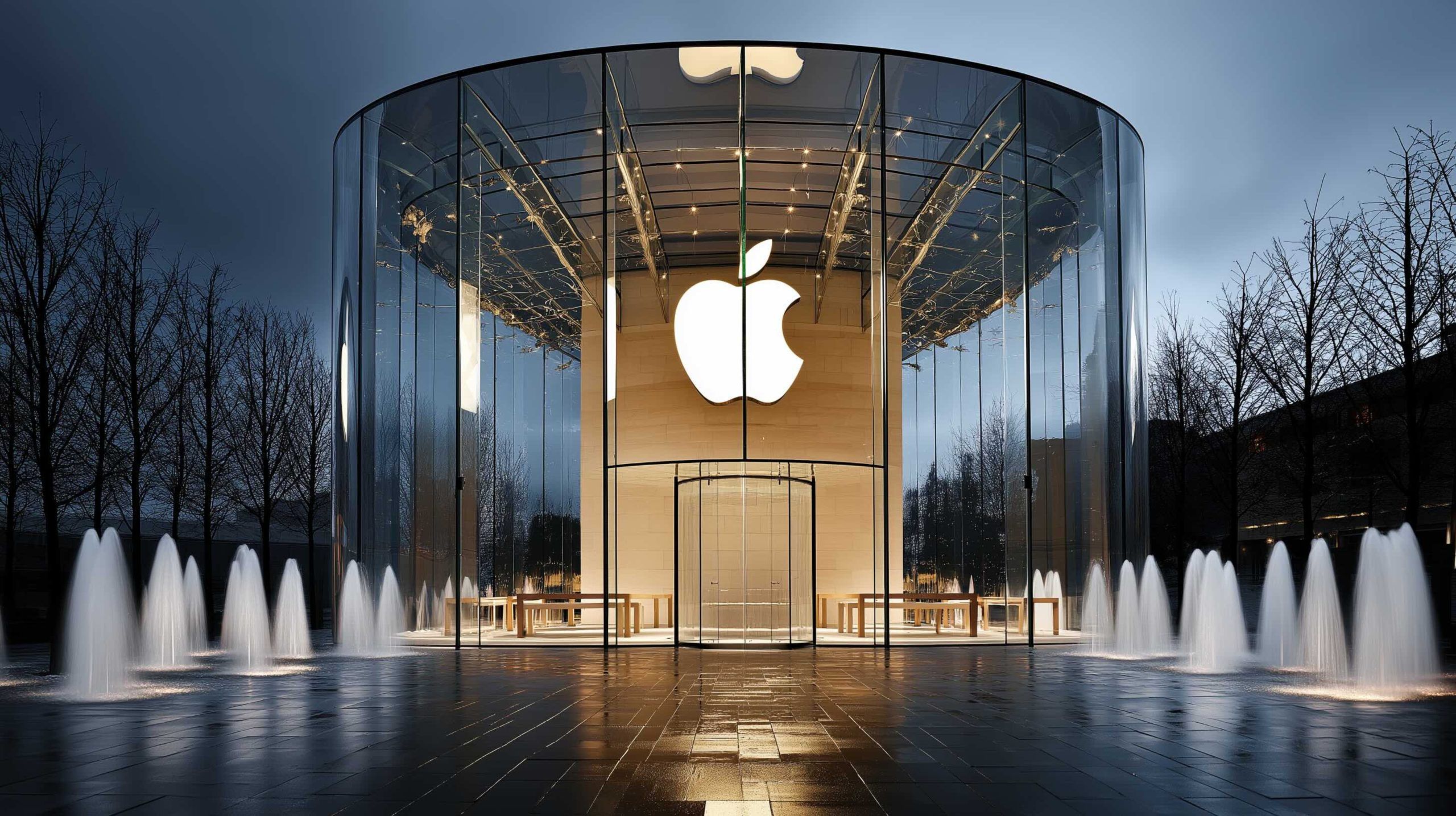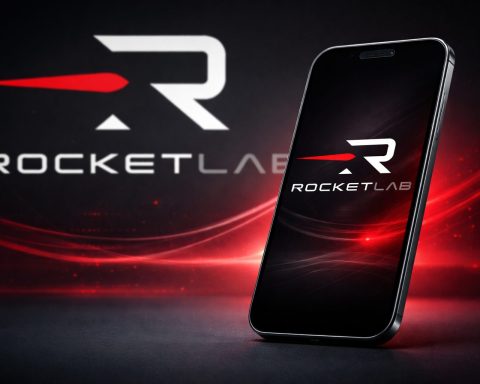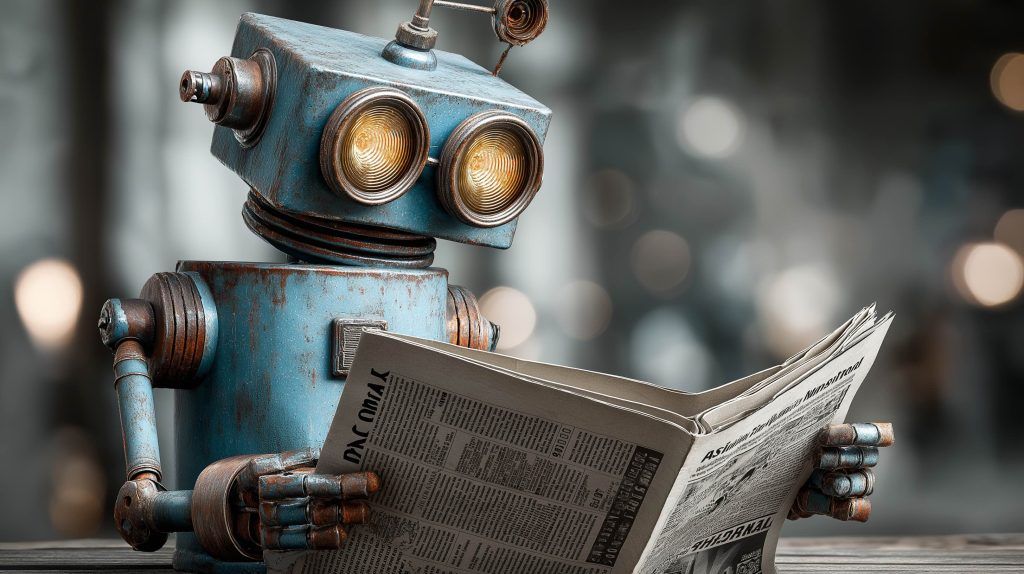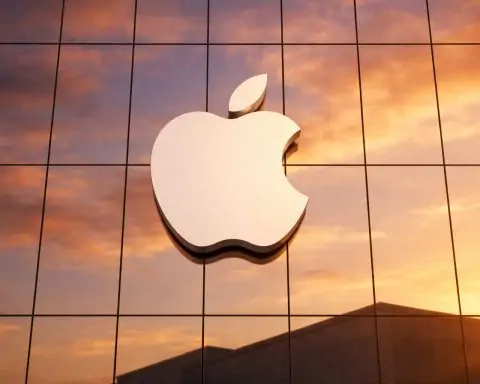-
<li Rumors for the September 2025 iPhone lineup peg four models—iPhone 17, 17 Pro, 17 Pro Max, and a new 6 mm thick iPhone 17 Air—featuring a 6.6-inch display, ProMotion 120Hz, an in-house 5G modem, and a triple‑sensor 48MP camera on the Pro Max.
<li Apple restored Blood Oxygen monitoring on Apple Watch Series 9, Series 10, and Watch Ultra 2 in the U.S. via an August 14, 2025 software update after a Masimo patent dispute.
<li Apple reported Q3 2025 (fiscal 2025, April–June) revenue of $94.0 billion, diluted EPS of $1.57, and all-time-high Services revenue with over 1 billion paid subscriptions.
<li Chief Operating Officer Jeff Williams, a 30-year Apple veteran, will retire at the end of 2025 with Sabih Khan transitioning to COO in August 2025.
<li On August 6, 2025, Apple unveiled a $600 billion, four-year American Manufacturing Program to localize production, including a $2.5 billion Corning glass plant in Kentucky to make 100% of iPhone and Apple Watch cover glass in the USA.
<li Apple is expanding iPhone production in India to all four iPhone 17 models across five plants, including Tata’s Tamil Nadu and Foxconn near Bengaluru, with India exporting $7.5 billion worth of iPhones from April–July 2025.
<li South Korea’s ETNews, corroborated by supply-chain chatter, claimed Apple may delay the iPhone 18 base model to spring 2027, possibly releasing only Pro models in fall 2026.
<li Ming-Chi Kuo says Apple will adopt 2-nanometer chips in iPhones by 2026, likely the A20 or A21, aligning with TSMC’s 2nm roadmap.
<li Analysts anticipate the next-gen Vision Pro with an M5 chip to begin mass production by late 2025, targeting about 150,000 units, while Apple plans a lower-cost AR/VR headset by 2025–26 and AR glasses in the late 2020s.
<li On August 12, 2025, an Australian federal court ruled that Apple’s App Store violated competition laws (along with Google’s), paving the way for Epic Games Store and Fortnite to return to iOS in Australia.
August 2025 has been a whirlwind month for Apple across product rumors, software updates, corporate moves, and global developments. From tantalizing iPhone 17 leaks and surprise software tweaks to a blockbuster earnings report and high-profile legal battles, here’s a comprehensive roundup of Apple’s biggest news and developments worldwide this month.
Product Announcements & Releases
- Apple Arcade & Services: While no major hardware was launched in August, Apple kept fans engaged with new content on its services. Notably, Apple Arcade unveiled an exclusive retro-style football game NFL Retro Bowl ’26launching September 4, alongside Jeopardy! Daily and other titles [1] [2]. Apple TV+ also rolled out new seasons and originals globally, from Chief of War to Invasion (Season 3) [3] [4], keeping its growing subscriber base entertained.
- No New Devices (Yet): August is traditionally the calm before Apple’s fall product storm. As expected, Apple did not release new hardware this month, instead gearing up for the big September iPhone event. The company focused on polishing existing products and services, laying the groundwork for upcoming launches [5]. Apple’s retail operations continued globally (including new store openings and back-to-school promotions), but major device announcements were on hold pending the anticipated keynote next month.
Software Updates and iOS/macOS Betas
Apple’s software saw significant updates and previews in August:
- iOS 26 & macOS 26 Betas: Developers and enthusiasts received a steady stream of iOS 26, macOS 26, watchOS 26, and tvOS 26 beta updates throughout August. These next-generation operating systems – unveiled at WWDC in June – are in late-stage testing ahead of their fall release. By mid-August Apple had pushed out iOS 26 beta 7, refining a “beautiful new design” across all platforms and squashing bugs [6] [7]. Testers noted minor tweaks and improved Apple Intelligence features, but no major surprises as Apple focused on polish.
- Security Patches: For current OS versions, Apple issued incremental updates to address security flaws. For example, iOS 18.6.1 and watchOS 11.6.1 rolled out on August 14, delivering important fixes and one much-awaited feature return [8]. Apple also quietly announced it would end support for older systems like iOS 16 and macOS 12 by the end of August [9], nudging remaining users to upgrade for security.
- Blood Oxygen App Returns (U.S.): In a notable software + health update, Apple re-enabled the blood oxygen monitoring feature on Apple Watch Series 9, Series 10, and Watch Ultra 2 for U.S. customers [10] [11]. This feature had been disabled in the U.S. due to a patent dispute with medical firm Masimo. After obtaining regulatory approval and amid a legal truce, an August software update restored the Blood Oxygen app for U.S. users – allowing them to measure O₂ saturation via Apple Watch with data displayed on a paired iPhone [12] [13]. This ends a years-long saga where an ITC import ban had forced Apple to ship newer watches without the feature [14] [15]. Its comeback not only improves Apple’s health offerings but also marks a resolution in the Apple-Masimo battle (with U.S. Customs now clearing the feature’s return).
Hardware and Design Rumors
Even without August hardware launches, the rumor mill was in overdrive. Leaks and analyst reports painted an exciting picture of Apple’s upcoming devices:
- iPhone 17 Lineup Leaks: Slated for a September 2025 reveal, the iPhone 17 family is shaping up to deliver one of the biggest iPhone updates since the iPhone X [16]. Rumors from reliable sources (like Bloomberg’s Mark Gurman and analyst Ming-Chi Kuo) suggest four new models: iPhone 17, 17 Pro, 17 Pro Max, and an all-new ultra-thin iPhone 17 “Air.” Notably, Apple is reportedly eliminating the Plus model and introducing the “Air” variant as a 6.6-inch iPhone focused on sleek design [17] [18]. The iPhone 17 Air is rumored to be around 6 mm thick – an extraordinarily slim profile that would make it Apple’s thinnest iPhone ever [19].Key expected features across the iPhone 17 lineup include:
- ProMotion Everywhere: All models, even the standard iPhone 17, are likely to get 120Hz ProMotion displays, finally bringing high refresh rates to non-Pro iPhones [20].
- In-House 5G Modem: Apple may debut its long-developed Apple-designed 5G modem chip in at least one iPhone 17 model, reducing reliance on Qualcomm [21].
- Camera Overhauls: A revamped camera system is expected. Leaks point to a new horizontal camera bump design (a pill-shaped rear camera bar instead of the usual square) on certain models [22] [23]. The iPhone 17 Air might sport a single-lens 48MP rear camera(trading a second lens for thinness) [24] [25]. Meanwhile, the 17 Pro Max could pack three 48‑megapixel cameras (wide, ultra-wide, and a “Tetraprism” periscope telephoto), becoming the first iPhone with triple 48MP sensors and enabling 8K video recording [26] [27]. All 2025 iPhones are expected to upgrade to a 24MP front camera (up from 12MP) for sharper selfies [28].
- Design and Materials: Leaked schematics and dummy units hint at subtle design shifts – possibly aluminum frames on Pro models (for weight savings) instead of stainless/titanium [29], and a centered Apple logo and new color finishes. Notably, one leak claims the iPhone 17 Air will relocate its rear camera to the center of the device in a large, centered bump [30], although it remains to be seen if this pans out. Overall, 2025’s iPhones are expected to deliver the biggest design refresh in years, emphasizing thin profiles and fresh form factors [31] [32].
- Apple Watch & Other Devices: Looking beyond phones, rumors suggest Apple’s wearables and computers have big changes on the horizon:
- Apple Watch Series 11: Supply chain insiders believe at least one 2026 Apple Watch model will get a “significant redesign.” According to a DigiTimes report, a high-end watch next year could feature a radical new “exterior design” with eight sensors arranged in a ring pattern on the back [34]. This hints at a fresh look (and potentially new health capabilities) for Apple Watch, which has kept a similar appearance for several generations. While the Apple Watch Series 10 (2024) saw incremental tweaks, a more dramatic design overhaul seems to be in the pipeline – though likely not until late 2025 or 2026.
- Low-Cost MacBook: Ming-Chi Kuo, a top Apple analyst, revealed that Apple is developing a budget-friendly MacBook aimed at increasing Mac sales [35] [36]. Interestingly, this 13-inch laptop would be powered by an iPhone-class chip (A18 Pro) rather than the usual M-series Mac chips [37]. If true, it would be the first Apple Silicon Mac to use an A-series processor. The device – expected to enter production around Q4 2025 – could come in fun colors (Silver, Blue, Pink, Yellow) and would target the midrange laptop market with lower cost and efficient performance [38] [39]. Apple reportedly hopes this move could make the new model account for up to ~25% of MacBook sales next year [40].
- AR/VR and More: Apple’s much-anticipated Vision Pro mixed-reality headset (set to launch in more countries in 2025) is also generating buzz. Analysts predict Apple will already be preparing its successor: Kuo has noted that mass production of a next-gen “M5” chip Vision Pro could begin by late 2025, with a target of ~150,000 units [41]. Meanwhile, Mark Gurman reported Apple is quietly working on entirely new product categories – including a smart home hub device and even a tabletop robot – for the coming years, indicating that Apple’s hardware ambitions extend well beyond phones and PCs [42].
Financial Performance & Stock News
Apple’s latest earnings underscored its financial might, even in a challenging economy:
- Record-Breaking Q3 Results: Apple announced stellar results for its fiscal 2025 third quarter (April–June). Revenue hit $94.0 billion, up 10% year-over-year, marking a new June-quarter record [43]. This was fueled by double-digit growth in flagship segments: “iPhone, Mac, and Services” all saw double-digit sales increases, according to CEO Tim Cook [44]. Quarterly profit also impressed – diluted EPS of $1.57 was up 12% YoY [45]. Apple highlighted that its global business grew in every geographic segment, and its Services division (App Store, Apple Music, iCloud, etc.) achieved an all-time high in revenue [46].Apple’s leadership was ebullient. “Today Apple is proud to report a June quarter revenue record with double-digit growth… and growth around the world, in every geographic segment,” said Tim Cook, crediting strong customer loyalty and excitement from WWDC announcements [47]. New CFO Kevan Parekh (who succeeded Luca Maestri in January) noted the company’s “record business performance” and an all-time high active device install base across all product categories [48] – a testament to Apple’s expanding user ecosystem.
- Market Reaction: Despite economic headwinds, Apple’s stock has been on a roller coaster. After a dip earlier in 2025, Apple shares rebounded by August, nearing all-time highs. AAPL traded around $224 per share in mid-August, recovering from a >15% slump in the first half of the year as investor sentiment improved [49]. This put Apple’s market capitalization back in the ~$3 trillion territory – maintaining its crown as the world’s most valuable company. In fact, some analysts see even more upside: one longtime Wall Street Apple bull argued that the market still underestimates Apple’s march toward a $4 trillion valuation [50]. Buoyed by strong iPhone demand and new product categories like Vision Pro on the horizon, several firms raised their price targets for Apple going into late 2025.
- Services & Subscriptions: A highlight of the quarter was Apple’s Services revenue, which reached a new peak [51]. Apple now boasts over 1 billion paid subscriptions across its services. This recurring revenue helped offset softer areas and was a focal point for investors. Additionally, Apple’s Board approved a quarterly dividend of $0.26 per share (payable in August) [52], continuing the company’s shareholder returns via dividends and aggressive stock buybacks.
Legal & Regulatory Developments
Apple faced significant legal and regulatory moments in August, spanning multiple continents:
- Epic Games vs Apple – Australia Ruling: The global antitrust battle between Apple and Fortnite maker Epic Games hit a new milestone down under. On August 12, an Australian federal court ruled that Apple’s App Store (and Google’s) violated competition laws, finding the mobile app store model uncompetitive in certain respects [53]. This partial victory for Epic Games concluded that Apple and Google “abuse their control over app distribution and in-app payments to limit competition,” according to Epic’s statement [54] [55]. Notably, the court stopped short of saying the companies intentionally broke the law, but it flagged the lack of safeguards against anti-competitive behavior in the iOS and Android app distribution models [56] [57]. Epic triumphantly announced that as a result, the Epic Games Store and Fortnite will finally come to iOS in Australia (after having been banned), calling the judgment a big win for developers and consumers [58].Apple, for its part, welcomed the court’s rejection of some of Epic’s claims but “strongly disagreed” with other findings [59]. “Apple faces fierce competition in every market where we operate,” the company maintained, continuing to argue that its App Store policies are not monopolistic [60]. Google voiced similar agreement with parts of the decision while disputing the characterizations of its billing practices [61]. Both companies are reviewing the massive 2,000-page judgment and considering next steps, so the saga is not over. Nonetheless, the Australian case adds pressure on Apple (already fresh from U.S. and EU antitrust scrutiny) to loosen its App Store restrictions – at least in that jurisdiction.
- App Store Regulation Worldwide: Apple’s App Store policies remain under the microscope globally. In the EU, Apple is already grappling with the Digital Markets Act’s requirements – including enabling third-party app stores and sideloading. Indeed, Apple had to allow sideloading in iOS for Europe by 2024 to comply with EU rules [62], a seismic shift for the walled-garden ecosystem. This August, the company also faced pressure in Brazil: regulators and courts there have ordered Apple to open up iOS to outside app distribution, echoing the Epic case. (Earlier in 2025, a Brazilian judge gave Apple 90 days to permit sideloading, citing competition concerns [63] [64].) Apple continues to appeal such rulings, arguing that unfettered sideloading would “harm the privacy and security” of its users [65]. However, the global trend is clear – authorities from South America to East Asia are demanding a more open iPhone, which could force Apple to adapt its software and business model in the coming year.
- Patent and Import Battles: As noted, Apple resolved one patent fight this month by reintroducing the Blood Oxygen watch feature after a legal settlement with Masimo (which had won an import ban on certain Apple Watches) [66] [67]. The settlement and U.S. government approval now let Apple restore the feature without fear of product seizures at the border [68] [69]. Elsewhere, Apple’s legal team remains busy with a host of ongoing cases – from defending App Store payment rules in the U.S. (the Epic v. Apple appeals in California) to privacy and antitrust probes in Europe and Asia. Notably, August saw reports that China’s regulators might target Apple with an antitrust inquiry (potentially as leverage amid U.S.-China trade tensions) [70], illustrating the geopolitical tightrope Apple walks as it navigates differing legal regimes.
Executive Leadership Moves
This month also brought significant changes in Apple’s top ranks, marking the end of an era for one veteran and a long-planned succession for another:
- COO Jeff Williams to Retire: Apple announced that Chief Operating Officer Jeff Williams – often regarded as #2 to CEO Tim Cook – will be stepping down after nearly 30 years at the company. In a press release, Apple said Williams will transition his COO role to Sabih Khan (SVP of Operations) in August as part of a “long-planned succession,” and Williams will officially retire at the end of 2025 [71] [72]. Jeff Williams has been instrumental at Apple, overseeing the entire global supply chain and operations that produce hundreds of millions of devices, and playing key roles in the Apple Watch’s creation, the health initiatives, and even leading Apple’s design team after Jony Ive’s departure [73] [74]. “Apple wouldn’t be what it is without him,” Tim Cook said, lauding Williams for creating “one of the most respected supply chains in the world” and being a close friend [75]. Williams’s departure is a major shift – he’s been with Apple since 1998 and COO since 2015 – but the company emphasized that Sabih Khan, a 30-year Apple veteran himself, is “the most talented operations executive on the planet” to fill Jeff’s shoes [76] [77]. Khan has led Apple’s ops team since 2019 and pioneered many of Apple’s supply chain expansions (including recent U.S. manufacturing projects), so his promotion to COO is seen as continuity in Apple’s operational excellence [78] [79].
- CFO Transition: While not an August event per se, it’s worth noting in context that Apple entered 2025 with a new Chief Financial Officer, Kevan Parekh, who took over on January 1. Longtime CFO Luca Maestri stepped down after a decade, with Parekh (an Apple finance executive) now steering Apple’s financial strategy [80] [81]. Under Parekh, Apple has continued its fiscally conservative approach – massive stock buybacks, steady dividends, and heavy investment in R&D and strategic initiatives. The smooth handover means Apple’s finance leadership remains strong as the company heads into new ventures (like AR/VR) requiring significant capital. Together with the COO change, these moves show Apple carefully managing succession at the highest levels to maintain stability. Tim Cook himself remains firmly at the helm (with no sign of stepping aside), but industry-watchers are keeping an eye on Apple’s bench of leaders now that two of Cook’s closest lieutenants (Williams and Maestri) have exited or announced plans to.
- Other Leadership News: There were no other major executive shakeups announced in August. However, Apple’s board and management did draw some discussion in the press. A Fortune analysis noted that CEO Tim Cook is under pressure from some quarters (over things like innovation speed and stock performance), but most experts believe Cook will remain as chief for years to come – continuity that is likely beneficial for Apple [82]. Additionally, Apple’s AI/machine learning division saw some talent turnover (with a few high-profile engineers reportedly poached by Meta), which has spurred Apple to double-down on retaining and recruiting top AI talent [83] [84]. Overall, Apple’s leadership team is evolving, but the company is clearly focusing on long-term stability and careful succession planning to avoid any disruption in its trajectory.
Strategic Partnerships & Manufacturing Initiatives
Apple used August 2025 to double down on “designed by Apple, made in America (and India)” – unveiling ambitious investments and partnerships to secure its supply chain and appease global trade tensions:
- $600 Billion U.S. Investment Plan: In a major announcement on August 6, Apple revealed an “American Manufacturing Program” as part of its commitment to invest $600 billion in the U.S. economy over the next four years [85] [86]. This blockbuster plan includes a slew of new and expanded partnerships with U.S. suppliers aimed at localizing production of key components:
- Apple is partnering with Corning to manufacture 100% of iPhone and Apple Watch cover glass in the USAfor the first time [87]. It is investing $2.5 billion in Corning’s Harrodsburg, Kentucky plant – funding what will become the world’s largest and most advanced smartphone glass production line [88]. Soon, “any customer anywhere in the world who buys a new iPhone or Apple Watch will be holding precision glass made right here in Kentucky,” said Tim Cook [89]. The deal also establishes a new Apple-Corning Innovation Center in Kentucky to co-develop next-gen glass technologies [90].
- Apple struck a multiyear agreement with Coherent Corp. to supply the VCSEL lasers used in Face ID and other sensors, with production happening at Coherent’s Texas facility [91]. Similarly, Apple will buy US-made rare earth magnets from MP Materials, supporting an expansion of MP’s Texas magnet factory and a new recycling line in California [92].
- In silicon, Apple detailed an initiative to create an end-to-end U.S. chip supply chain. It will source advanced silicon wafers from GlobalWafers’ new plant in Sherman, Texas (using silicon from Corning’s Hemlock Semiconductor) [93]. Apple is investing with Texas Instruments to boost chip fabrication in Utah and Texas (installing new equipment for cutting-edge analog and wireless chips) [94]. Apple is also working with Samsung’s Austin fab to introduce a never-before-used chipmaking technology in the U.S. [95], and partnering with GlobalFoundries in New York on wireless and power management chips [96]. Finally, Apple is backing Amkor’s new chip packaging plant in Arizona, which will package chips from TSMC’s Arizona fab for use in iPhones [97].
- India Production Expansion: At the same time, Apple is rapidly expanding manufacturing in India, further diversifying its supply chain. According to a Bloomberg report in mid-August, Apple is ramping up iPhone production across five factories in India, including two massive newly-opened plants [99]. For the first time, all four iPhone 17 models will be produced in India (not just in China) to meet launch demand next month [100]. Two new suppliers – a Tata Group plant in Tamil Nadu and a Foxconn facility near Bengaluru – are central to this expansion [101]. Tata’s factories are expected to handle up to half of India’s iPhone output within two years, making Tata a key Apple manufacturing partner alongside Foxconn [102].The scale of Apple’s India shift is striking: between April and July 2025, India exported $7.5 billion worth of iPhones, nearly half the prior full-year total of $17 billion [103]. A recent analysis even found India has overtaken China as the number one exporter of smartphones to the U.S. [104]. This trend is fueled in part by geopolitical strategy – Apple is navigating U.S.–China trade tensions and high import tariffs. Notably, U.S. tariffs on Indian goods (50% under President Trump’s trade policy) exclude electronics, and Tim Cook’s pledge of $600 billion U.S. investments was in part to maintain those tariff exemptions for India-made iPhones [105]. In short, Apple is skillfully balancing manufacturing across continents: “Designed in California, made in India” is becoming reality for flagship iPhones, while huge U.S. investments keep regulators content and production diversified.“That’s an incredible surge in iPhone manufacturing capacity in such a short time,” one observer noted of India’s jump, adding that Apple’s rapid supply chain shift will “reduce the impact of tariffs on U.S. consumers” and increase resilience [106] [107]. However, it’s not without challenges – reports say China has discouraged tech transfers to India, even recalling some Chinese engineers from Indian plants, forcing Apple and Foxconn to bring in more expensive specialists from Taiwan and Japan [108]. Despite such hurdles, Apple’s multi-country strategy (China + India + U.S.) signals a new era: the company is de-risking its manufacturing and ensuring it can meet booming demand worldwide without being bottlenecked by any single region’s politics or pandemics.
- Other Partnerships: Apple also deepened strategic partnerships in other domains. In August, the company and Corning (in addition to the Kentucky glass expansion) celebrated 16 years of collaboration – Corning’s ultra-durable Ceramic Shield glass, developed with Apple, remains exclusive to iPhone and was highlighted as an American innovation success [109] [110]. Apple’s long relationship with manufacturing partner Foxconn is also evolving: Foxconn itself announced this month a push beyond iPhones into new areas like AI servers (even as it continues to be Apple’s primary device assembler) [111]. And Apple’s growing ties with Tata Group in India could extend beyond iPhones to other product lines (there are rumors Tata might manufacture AirPods or Mac components in the future). All told, strategic partnerships – whether with glassmakers, chip fabricators, or international conglomerates – were front and center in Apple’s August news, as the company sets the stage for its next decade of growth with a more distributed and robust supply chain.
Major Acquisitions & AI Strategy
Unlike some tech giants, Apple has historically avoided headline-grabbing mega acquisitions – but that doesn’t mean it’s standing pat. In the realm of AI and emerging tech, Apple signaled an openness to bold moves:
- Eyeing AI Companies: On July 31 (just before August began), CEO Tim Cook made waves by telling CNBC that Apple is “open to an acquisition that would accelerate our AI roadmap.” He emphasized that Apple views artificial intelligence as “one of the most profound technologies of our lifetime” and is “significantly growing” AI R&D investments [112]. Notably, Cook revealed Apple has already acquired seven smaller AI companies in 2025 alone [113] – continuing its pattern of quietly buying startups in machine learning, computer vision, and related fields. While these acquisitions were mostly undisclosed, they underscore Apple’s intent to build AI features (like on-device Siri improvements and Apple Intelligence services) largely in-house.
- Big Fish on the Radar: Cook’s remarks also sparked speculation that Apple might be considering a much largerAI purchase. He noted Apple isn’t against M&A, and indeed many investors have been urging Apple to make a splashy AI acquisition to catch up with rivals in generative AI [114]. There have been rumors (unconfirmed) about Apple exploring partnerships with OpenAI or Anthropic to enhance Siri with a powerful large language model [115]. More concretely, insiders say Apple has considered acquiring Perplexity AI, an AI startup known for its conversational search engine, which is valued around $18 billion [116]. If Apple pulled the trigger on that, it would be the biggest purchase in its history – dwarfing the $3B Beats deal in 2014. As of August, no such deal has materialized, but the fact that it’s being discussed shows Apple is under pressure in the AI raceand is evaluating all options (build vs buy).
- Investor Pressure: The context for this is Apple’s perceived AI laggard status. This summer, reports emerged that key AI engineers have left Apple for competitors like Meta [117], and Apple’s AI offerings (e.g. Siri) feel behind cloud-based AI like ChatGPT. Combined with a brief slump in Apple’s stock (partly on AI concerns), it led some shareholders to lobby for a “transformative acquisition” to inject AI talent or tech [118]. Apple’s typical approach is to acquire small startups quietly, but Cook’s public statement “we’re open to M&A that accelerates our [AI] roadmap” [119] was a clear message that – for the right opportunity – Apple could write a big check.
- No Major Acquisition (Yet): To be clear, no major acquisitions were announced in August. Apple’s biggest moves were investments and partnerships, not purchases of entire companies. The Perplexity AI rumors remain just that, and Apple has not confirmed any talks. In fact, Apple’s shyness about large acquisitions persists; it prefers to spend on internal R&D (nearly $30 billion a year now) and smaller tuck-in deals. However, the tone from Cupertino suggests a newfound willingness to think big inorganically if necessary to remain competitive in critical areas like artificial intelligence. This will be an area to watch in the coming months – a blockbuster AI acquisition or partnership could fundamentally reshape Apple’s strategy and public perception in the AI domain.
Analyst Insights & Future Outlook
August also brought a flurry of forward-looking analyst predictions and reports hinting at Apple’s road ahead:
- New “homeOS” in Development: According to Bloomberg’s Mark Gurman, Apple is secretly working on an all-new operating system codenamed “Charismatic.” This OS is believed to be the long-rumored “homeOS” – a platform for smart home devices [120]. Gurman reports that Apple plans to use Charismatic to power a new home hub device in 2026 (think something like an iPad-like smart display or a HomePod with a screen) and even a tabletop robot by 2027 [121]. The software would blend technologies from iOS and Siri with home automation, enabling a whole new category of Apple products centered on the smart home and perhaps personal robotics. This suggests Apple is expanding its ecosystem beyond the traditional screens into more ambient computing – and doing so with a unified OS strategy. If true, we may hear the first official word about homeOS or related devices at a future WWDC or fall event as Apple prepares to challenge Amazon’s Alexa and Google’s Nest in the smart home arena.
- Shake-Up to iPhone Release Cycle: A surprising report from South Korea’s ETNews (corroborated by some supply chain chatter) claims Apple might delay the “iPhone 18” base model launch to spring 2027, breaking its usual annual cadence [122]. In other words, the 2026 iPhone lineup (the 18 series) might only include the Pro models in the fall, with the non-Pro coming later. This would be a radical shift from Apple’s predictable yearly rhythm. Why would Apple do this? Analysts speculate it could be to better stagger major upgrades (ensuring the base model gets meaningful changes when it does launch) or to push more customers toward the higher-margin Pro models during the holiday quarter. It might also help Apple manage supply constraints or new technology rollouts (for example, if cutting-edge chips or camera tech are initially limited, they’d go to Pros first). Apple of course has not confirmed anything, and its plans could change, but such a move would mark a “major shift in the company’s long-established release cycle” [123]. Keep an eye on 2026 – if only Pro iPhones launch that September, it will confirm that Apple is experimenting with its product timing in ways we haven’t seen before.
- Tech Roadmaps – Silicon and More: Famed analyst Ming-Chi Kuo also shared insights into Apple’s technology roadmap:
- He reaffirmed that Apple is on track to adopt 2-nanometer chips in iPhones by 2026, likely with the A20 or A21 chip, which would keep Apple at the forefront of semiconductor tech [124]. This aligns with TSMC’s 2nm fabrication timeline and suggests the iPhone 19 or 20 generation will boast significant efficiency and performance gains.
- Kuo also provided a long-term outlook on Apple’s XR (extended reality) lineup. His research indicates Apple will release a more affordable AR/VR headset by 2025–26 (to accompany the ultra-premium Vision Pro), and even continues to work on AR glasses for the late 2020s [125] [126]. While Vision Pro hasn’t even hit consumers’ hands yet, Apple is clearly planning a family of spatial computing devices for the future.
- Additionally, Kuo’s note about a low-cost A18-based MacBook (mentioned earlier) feeds into a broader prediction: Apple might start segmenting its Mac chip strategy (using both M-series and A-series chips) to fill all price tiers. If the A-chip MacBook succeeds in 2026, we could see more iPhone-silicon Macs targeting budget-conscious users or education, expanding Apple’s reach.
- Market Trends & Apple’s Strategy: Analysts widely expect Apple’s September 2025 event to be a blockbuster, with the iPhone 17 lineup and new Apple Watch models taking center stage. There is speculation that Apple could also tease the Apple Watch Ultra 3 or new iPad Pro updates at that event, though some updates (like iPads or Macs with M3 chips) might wait until October. Looking further out, 2025 and 2026 are shaping up to be transformative for Apple: “If 2023–2024 were about the Vision Pro’s debut, 2025–2026 will be about Apple iterating and broadening its portfolio – new iPhones, new categories, new chips, and new designs,” as one tech commentator put it. Wall Street analysts maintain mostly “Buy” ratings on Apple stock [127], betting that continued strong iPhone sales (especially with the exciting iPhone 17 on deck) and growth in services and wearables will drive Apple to new financial heights. Some are watching how well Apple can execute its Apple Intelligence (AI) initiatives – both device-side features and potential services – as this could open new revenue streams (in areas like health, personal AI, and automotive with the rumored Apple Car). In sum, the consensus outlook is that Apple’s near-term pipeline is very strong, and August’s developments – from manufacturing muscle to leaked product details – reinforce the view that “the best is yet to come” for Apple’s fans and investors.
Sources:
- Apple Press Release – Apple reports third quarter results (July 31, 2025) [128] [129]
- Apple Newsroom – Apple and Corning partner to manufacture 100% of iPhone and Apple Watch cover glass in Kentucky [130] [131] (Apple Newsroom, Aug 6, 2025)
- MacRumors – Apple’s iPhone 17 Manufacturing Expands Across Five Indian Plants [132] [133] (Tim Hardwick, Aug 19, 2025)
- MacRumors – iPhone 17: Everything We Know [134] [135] (Roundup updated Aug 14, 2025)
- Reuters – Australia court rules partly against Apple, Google in Epic Games lawsuit [136] [137] (Byron Kaye, Aug 12, 2025)
- Reuters – Apple to bring blood oxygen feature to some US watches with software update [138] [139](Stephen Nellis, Aug 14, 2025)
- MacRumors – Apple ‘Open’ to Acquisition That Accelerates AI Roadmap [140] [141] (Juli Clover, Jul 31, 2025)
- Macworld – Before we get the iPhone 17, here’s everything coming from Apple in August [142] [143] (Jason Cross, Aug 1, 2025)
- MacRumors – Apple’s iPhone 17 Manufacturing Expands… (comments) [144] [145] and Mark Gurman responds to device leaks [146] (Aug 2025)
- DigiTimes via MacRumors – Apple Watch to Receive “Significant Redesign” Next Year [147] (report, Aug 15, 2025)
- Yahoo Finance – AAPL Stock Price Prediction: Where Apple Could Be by 2025 [148] (Aug 2025)
- The Street – Analyst revamps Apple price target ahead of 2025 [149] (Aug 2025)
- ETNews via MacRumors – No iPhone 18 in 2026, Report Claims [150] (Hartley Charlton, Aug 18, 2025)
References
1. www.apple.com, 2. www.apple.com, 3. www.macworld.com, 4. www.macworld.com, 5. www.macworld.com, 6. www.macworld.com, 7. www.macworld.com, 8. www.macrumors.com, 9. borncity.com, 10. www.reuters.com, 11. www.reuters.com, 12. www.reuters.com, 13. www.reuters.com, 14. www.reuters.com, 15. www.reuters.com, 16. www.macrumors.com, 17. www.macrumors.com, 18. www.macrumors.com, 19. www.macrumors.com, 20. www.macrumors.com, 21. www.macrumors.com, 22. www.macrumors.com, 23. www.macrumors.com, 24. www.macrumors.com, 25. www.macrumors.com, 26. www.macrumors.com, 27. www.macrumors.com, 28. www.macrumors.com, 29. www.macrumors.com, 30. www.macrumors.com, 31. www.macrumors.com, 32. www.macrumors.com, 33. www.macrumors.com, 34. www.macrumors.com, 35. www.macrumors.com, 36. www.macrumors.com, 37. www.macrumors.com, 38. www.macrumors.com, 39. www.macrumors.com, 40. www.macrumors.com, 41. thegadgetflow.com, 42. www.macrumors.com, 43. www.apple.com, 44. www.apple.com, 45. www.apple.com, 46. www.apple.com, 47. www.apple.com, 48. www.apple.com, 49. finance.yahoo.com, 50. www.thestreet.com, 51. www.apple.com, 52. www.apple.com, 53. www.reuters.com, 54. www.reuters.com, 55. www.reuters.com, 56. www.reuters.com, 57. www.reuters.com, 58. www.reuters.com, 59. www.reuters.com, 60. www.reuters.com, 61. www.reuters.com, 62. www.developer-tech.com, 63. 9to5mac.com, 64. 9to5mac.com, 65. 9to5mac.com, 66. www.reuters.com, 67. www.reuters.com, 68. www.reuters.com, 69. www.reuters.com, 70. 9to5mac.com, 71. www.apple.com, 72. www.apple.com, 73. www.apple.com, 74. www.apple.com, 75. www.apple.com, 76. www.apple.com, 77. www.apple.com, 78. www.apple.com, 79. www.apple.com, 80. www.apple.com, 81. www.cfodive.com, 82. fortune.com, 83. www.macrumors.com, 84. www.macrumors.com, 85. www.apple.com, 86. www.apple.com, 87. www.apple.com, 88. www.apple.com, 89. www.apple.com, 90. www.apple.com, 91. www.apple.com, 92. www.apple.com, 93. www.apple.com, 94. www.apple.com, 95. www.apple.com, 96. www.apple.com, 97. www.apple.com, 98. www.apple.com, 99. www.macrumors.com, 100. www.macrumors.com, 101. www.macrumors.com, 102. www.macrumors.com, 103. www.macrumors.com, 104. www.macrumors.com, 105. www.macrumors.com, 106. www.macrumors.com, 107. www.macrumors.com, 108. www.macrumors.com, 109. www.apple.com, 110. www.apple.com, 111. timesofindia.indiatimes.com, 112. www.macrumors.com, 113. www.macrumors.com, 114. www.pymnts.com, 115. www.macrumors.com, 116. www.macrumors.com, 117. www.macrumors.com, 118. www.pymnts.com, 119. www.macrumors.com, 120. www.macrumors.com, 121. www.macrumors.com, 122. www.macrumors.com, 123. www.macrumors.com, 124. www.iphoneincanada.ca, 125. news.macgasm.net, 126. techtoro.io, 127. stockanalysis.com, 128. www.apple.com, 129. www.apple.com, 130. www.apple.com, 131. www.apple.com, 132. www.macrumors.com, 133. www.macrumors.com, 134. www.macrumors.com, 135. www.macrumors.com, 136. www.reuters.com, 137. www.reuters.com, 138. www.reuters.com, 139. www.reuters.com, 140. www.macrumors.com, 141. www.macrumors.com, 142. www.macworld.com, 143. www.macworld.com, 144. www.macrumors.com, 145. www.macrumors.com, 146. www.macrumors.com, 147. www.macrumors.com, 148. finance.yahoo.com, 149. www.thestreet.com, 150. www.macrumors.com










